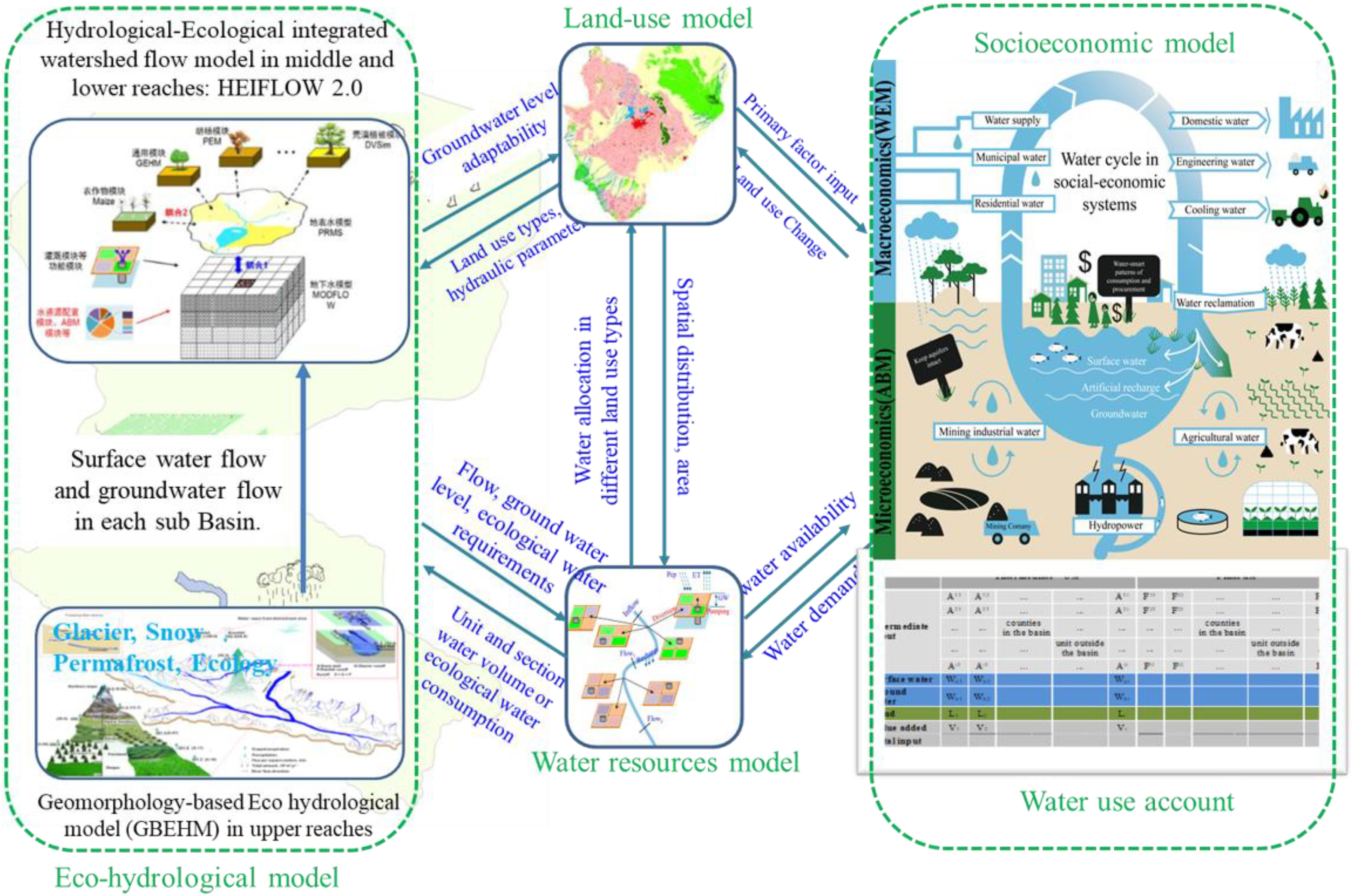-
Development and application of a watershed system model for the Heihe River basin
The model integration research team for the Heihe River basin recently published an article titled "novel hybrid coupling of ecology and society at river basin scale: a watered system model for the Heihe River Basin" in the journal of Environmental Modeling & Software.
Watersheds are the basic unit of Earth's land-surface system and, in most cases, are characterized by complex natural-human interactions. Numerical modeling is one of the fundamental methodologies used to study watershed-scale Earth systems. In order to more accurately portray the reciprocal feedbacks and synergistic evolution mechanisms among ecological, hydrological, and socio-economic subsystems in watersheds, and to support integrated water resources management and sustainable development of watersheds, it is necessary to conduct research on watershed system models and develop decision support systems for integrated water resources management in watersheds with watershed system models as the backbone.
The work was conducted under the major research plan of the National Natural Science Foundation of China (NSFC), the integrated research on the ecohydrological process of the Heihe River basin (2010-2019). The model integration research for the Heihe River basin has undergone a transition from the improvement of specific ecological and hydrological processes to the comprehensive development of a new basin system model that can reflect the characteristics of inland rivers. After years of efforts, the integrated model of the Heihe River basin system was completed. The model is ahead of existing models in terms of completeness of functions, performance, simulation and prediction capabilities, and application of remote sensing data.
The watershed system model for the Heihe River basin consists of four main modules, i.e., a geomorphology-based ecohydrological model for the upstream area GBEHM, a hydrological-ecological integrated watershed-scale model for the downstream area HEIFLOW, a socioeconomic model WEM, and a microbehavior-based model ABM, and two interface models connecting the ecohydrological model and the economic systems, i.e., the land use and water resource models. The model has been successfully applied in fine closure of multi-scale water balance in the basin, water use efficiency and water productivity analysis, medium and long-term ecohydrological simulation and prediction, ecological response study of key water management measures, and construction of decision support system for sustainable development of the basin.

Fig 1. Framework of the watershed system model. The natural system is represented by the ecohydrological model; and the socioeconomic systems are represented by the economic system model and the agent-based model (ABM). Land-use and water resource models are interface models between natural and economic systems. The exchange variables between the different components of the watershed system model are illustrated along the arrows that signify the directions of the coupling variables.
Article:
Li X*, Zhang L*, Zheng Y, Yang D, Wu F, Tian Y, Han F, Gao B, Li H, Zhang Y, Ge Y, Cheng G, Fu B, Xia J, Song C, Zheng C. Novel hybrid coupling of ecohydrology and socioeconomy at river basin scale: A watershed system model for the Heihe River basin. Environmental Modelling & Software, 2021, 141:105058.
Available at:

 Copyright ©right; 2017 - 中国科学院西北生态环境资源研究院 - 兰州数云软件科技有限公司提供技术支持
Copyright ©right; 2017 - 中国科学院西北生态环境资源研究院 - 兰州数云软件科技有限公司提供技术支持